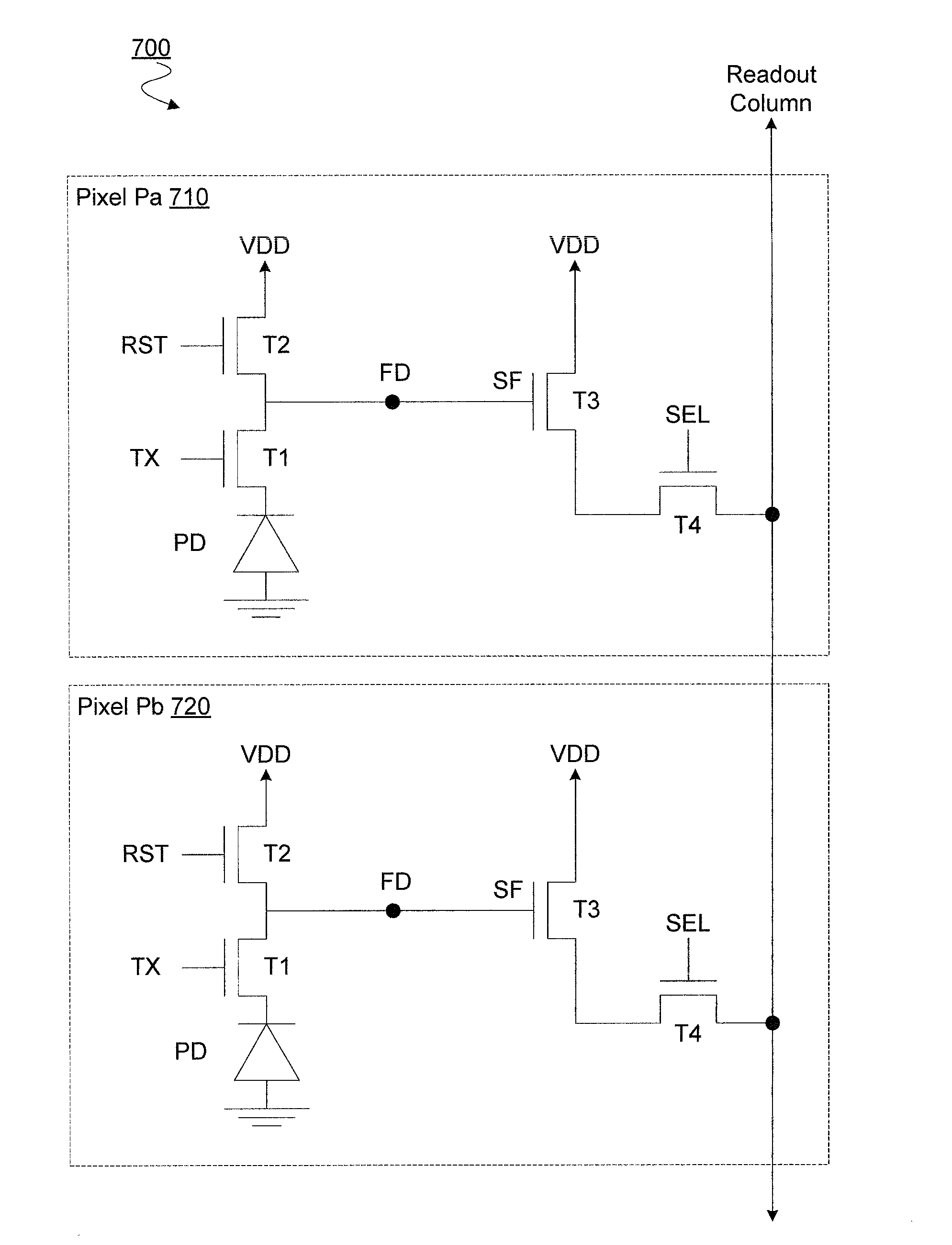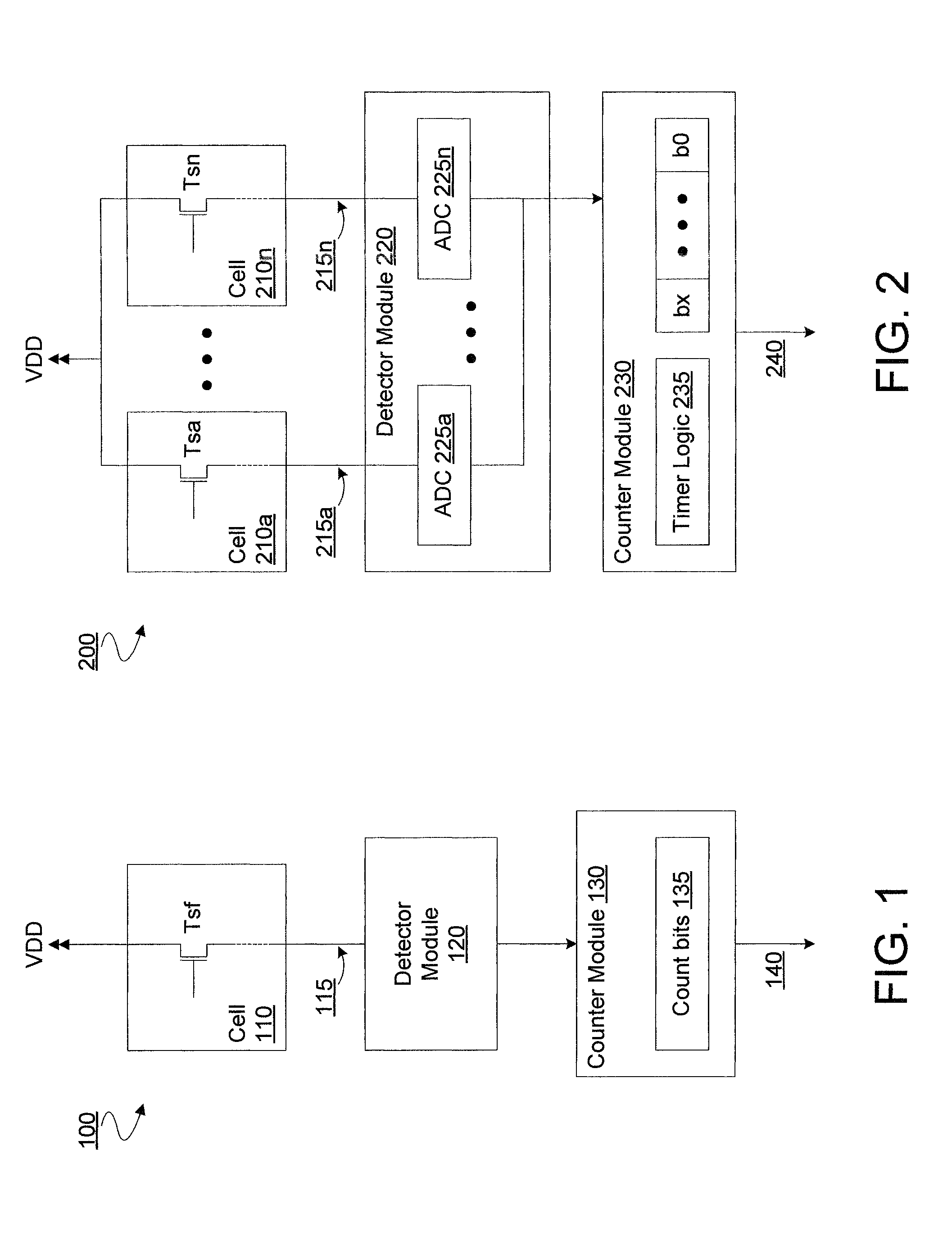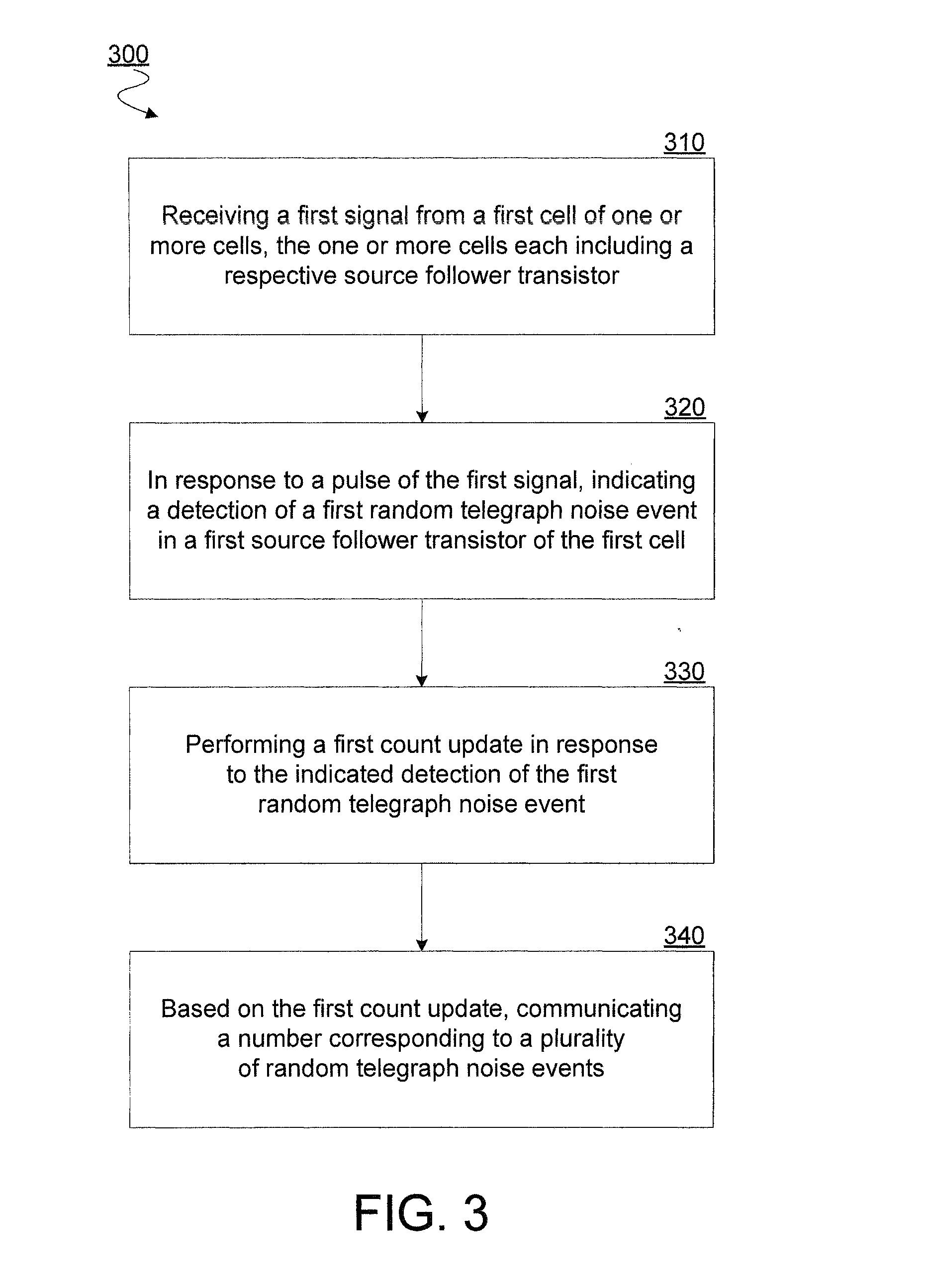Apparatus, method and system for random number generation
a random number and algorithm technology, applied in the field of electronic devices, can solve the problems of increasing the need for highly unpredictable number generation, repeating patterns after only tens of thousands of trials, and poor statistical properties of library functions
- Summary
- Abstract
- Description
- Claims
- Application Information
AI Technical Summary
Benefits of technology
Problems solved by technology
Method used
Image
Examples
Embodiment Construction
[0017]Embodiments discussed herein variously provide for random number generation based on random telegraph signal (RTS) noise in one or more source follower transistors. RTS noise, also known as burst noise, is a common random phenomenon in devices such as image sensors. RTS noise events may include or cause discrete periods of fluctuation, referred to herein as pulses, in a current or a voltage. For a given source follower transistor, such pulses may be of roughly the same magnitude, although they may vary in time duration, for example.
[0018]RTS noise events may include the random filling and emptying of oxide traps in a source follower transistor, where the number of such oxide traps may be random and / or the respective locations of such oxide traps in the source follower transistor may be random. Accordingly, such RTS noise events may be the basis for efficiently generating a truly random number, in certain embodiments. For example, various embodiments include detecting for RTS n...
PUM
 Login to View More
Login to View More Abstract
Description
Claims
Application Information
 Login to View More
Login to View More - R&D
- Intellectual Property
- Life Sciences
- Materials
- Tech Scout
- Unparalleled Data Quality
- Higher Quality Content
- 60% Fewer Hallucinations
Browse by: Latest US Patents, China's latest patents, Technical Efficacy Thesaurus, Application Domain, Technology Topic, Popular Technical Reports.
© 2025 PatSnap. All rights reserved.Legal|Privacy policy|Modern Slavery Act Transparency Statement|Sitemap|About US| Contact US: help@patsnap.com



